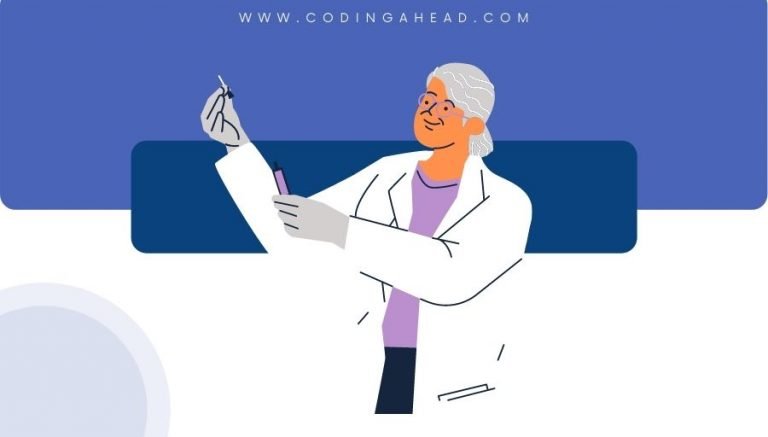How To Use CPT Code 61558
CPT 61558 describes the extensive craniectomy procedure performed by a provider to treat multiple cranial suture craniosynostosis, without the need for bone grafts. This article will cover the description, procedure, qualifying circumstances, appropriate usage, documentation requirements, billing guidelines, historical information and billing examples.
1. What is CPT Code 61558?
CPT 61558 can be used to describe the extensive craniectomy procedure performed by a provider to treat multiple cranial suture craniosynostosis, without the need for bone grafts. This code is used when the provider removes a portion of the skull and remodels it to its anatomically appropriate shape to treat the prematurely fused cranial sutures.
2. Official Description
The official description of CPT code 61558 is: ‘Extensive craniectomy for multiple cranial suture craniosynostosis (eg, cloverleaf skull); not requiring bone grafts.’
3. Procedure
- The provider makes incisions in the skull to remove the cranium and remodel the skull to its anatomically appropriate shape.
- The provider performs this procedure to treat prematurely fused cranial sutures, a condition known as craniosynostosis.
- When the patient is appropriately prepped and anesthetized, the provider makes an incision in the scalp and retracts most of or the entire scalp to expose the skull while maintaining adequate blood supply to the scalp.
- Next, the provider makes incisions to remove the entire portion of the skull enclosing the brain.
- He may need to change the position of the patient’s head or turn the patient to make additional scalp and skull incisions to remove the cranium and properly recontour the skull.
- The goal of this procedure is to treat craniosynostosis by normalizing the bone shape of the cranium.
- The provider then breaks and restructures the cranium bone to give it an anatomically appropriate shape, allowing the skull to grow normally.
- Finally, the provider replaces the reshaped cranium bones and secures them in place. He sutures the scalp layers together and covers the wound with a sterile dressing.
4. Qualifying circumstances
Patients eligible to receive CPT 61558 are those with multiple cranial suture craniosynostosis, a condition where the cranial sutures fuse prematurely. This procedure does not require bone grafts. The provider must perform an extensive craniectomy to remove the portion of the skull enclosing the brain and remodel it to its anatomically appropriate shape.
5. When to use CPT code 61558
CPT code 61558 should be used when the provider performs an extensive craniectomy procedure for multiple cranial suture craniosynostosis, without the need for bone grafts. This code is specific to cases where the provider removes a portion of the skull and remodels it to treat the prematurely fused cranial sutures.
6. Documentation requirements
To support a claim for CPT 61558, the provider must document the following information:
- Patient’s diagnosis of multiple cranial suture craniosynostosis
- Details of the extensive craniectomy procedure performed
- Specific techniques used to remove and remodel the skull
- Any complications or additional procedures performed during the surgery
- Post-operative care instructions and follow-up plans
- Signature of the provider performing the procedure
7. Billing guidelines
When billing for CPT 61558, ensure that the procedure meets the criteria for extensive craniectomy for multiple cranial suture craniosynostosis without the need for bone grafts. Follow the appropriate coding guidelines and ensure accurate documentation to support the claim. It is important to review payer-specific policies and guidelines to ensure proper reimbursement.
8. Historical information
CPT 61558 was added to the Current Procedural Terminology system on January 1, 1991. It was later added to the Inpatient Only (IPO) list for Medicare in 2017.
9. Examples
- A provider performs an extensive craniectomy procedure for a patient with multiple cranial suture craniosynostosis, without the need for bone grafts.
- A child with cloverleaf skull deformity undergoes an extensive craniectomy procedure to treat the prematurely fused cranial sutures.
- A provider performs an extensive craniectomy to remodel the skull and normalize the bone shape for a patient with multiple cranial suture craniosynostosis.
- An infant with craniosynostosis undergoes an extensive craniectomy procedure to correct the fused cranial sutures and allow normal skull growth.
- A provider performs an extensive craniectomy to treat multiple cranial suture craniosynostosis in a young child, without the need for bone grafts.
- A patient with craniosynostosis undergoes an extensive craniectomy procedure to reshape the skull and promote normal brain development.
- A provider performs an extensive craniectomy to treat the cloverleaf skull deformity caused by multiple cranial suture craniosynostosis.
- An extensive craniectomy procedure is performed to correct the prematurely fused cranial sutures in a patient with craniosynostosis.
- A child with craniosynostosis undergoes an extensive craniectomy to reshape the skull and allow normal brain growth.



